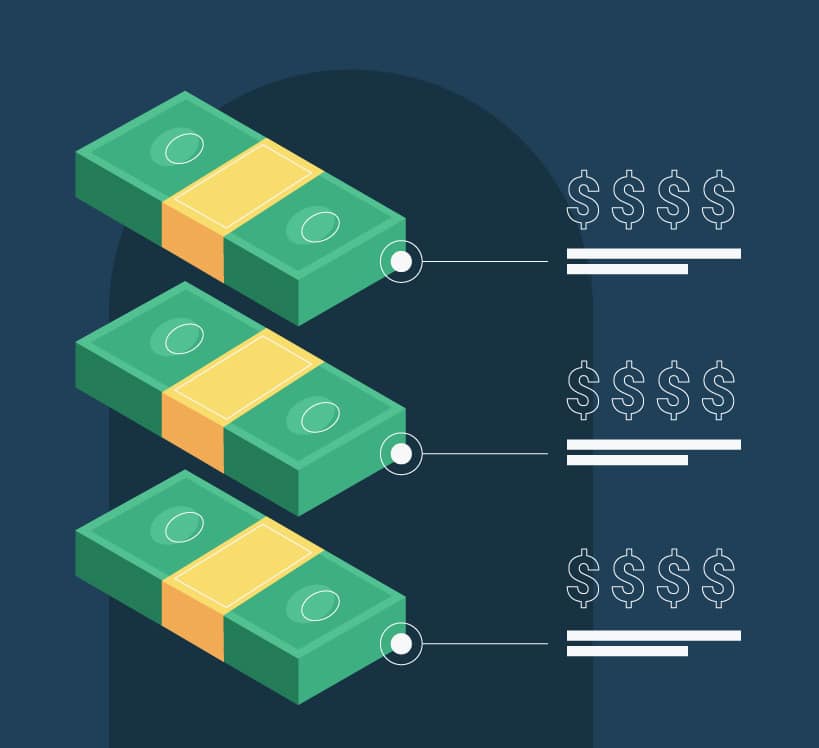Having enough funds to run your business can be a major challenge for small business owners. A need for additional funds will come up from time to time depending on the profitability of the business, its growth rate and future business prospects.
The sources of funds for small businesses generally fall into 2 categories:
- Attracting additional equity capital
- Taking out loans
Each method has its advantages and disadvantages, and the choice between the two depends on the particular circumstances and needs of the business.
Let’s consider the issues involved and how to decide which way to go. But, the first step is to identify the reasons the business needs additional funding.
What Is the Need for Funding?
Why does the business need more money? The reason for the need for additional funds will give some indication of whether you should go for debt or equity.
Cash-Flow Shortages
If you’re constantly borrowing money to fill shortages in cash flow, you need to address the problem of why you’re having negative cash flows. If the problem is the result of issues such as excessive expenses or low productivity, these dilemmas should be corrected first. Financing should never be the solution to balancing your cash flow each month.
However, if you find that the cash-flow deficits are seasonal and temporary, then taking out short-term loans may be the best solution. There are several different types of short-term loans available to meet this need.
Growth or Expansion
Suppose you want to expand your business or invest in new opportunities. In these situations, you could either solicit capital from outside investors or apply to lenders for long-term financing to purchase fixed assets or invest funds in a marketing program to introduce new products and enter new markets.
Refinance or Pay Down Existing Debt
If interest rates have declined or the credit rating of your business has improved, it might be time to refinance your current debts with new loans. Typically, paying off existing debts to get more favorable terms is preferable to substituting additional equity capital for debt as long as the business has sufficient cash flow to meet the payment obligations.
Should you pursue capital from other investors, take out loans or finance your needs with internal cash flow, known as bootstrapping.
Soliciting Additional Equity Capital
If you accept new capital from investors, you’ll have to give up part of your ownership in the business forever, unlike a loan that you pay off and have no further obligations to the lenders.
The advantage of using equity funds is you don’t have to make fixed monthly payments as you would with a loan. In this sense, your business is at less financial risk, and you aren’t obligated to pay the money back. If you accept equity, you can pay out dividends to the investors at your discretion whenever you feel that the company has excess cash flow and no other better use for the funds.
Depending on how much ownership you give up, you may also have to compromise your management decision-making if you have other partners. The business isn’t just your own anymore. It also has other investors who feel they have a right to have input into the management and direction of the business.
If your business doesn’t have assets to offer as collateral, you’ll have to pursue equity investors because you probably won’t qualify for a loan. For example, a trucking company can use its vehicles as collateral for loans where a technology company selling software wouldn’t have similar fixed assets to offer.
Equity funds can come from private individuals, venture capital firms or angel investors.
Finding the Right Loan
It’s often quicker and easier to obtain a loan than it is to solicit and secure funds for equity from outside investors. Lenders will check the credit history of your business with credit bureaus, such as Dun & Bradstreet, analyze the company’s cash flow and gauge the quality of the collateral. Equity investors are more interested in the long-term prospects for the business and expect to receive a higher return on their money.
Borrowing money increases your return on equity. However, it also raises your financial risks by increasing your debt-to-equity ratio. If your sales and cash flow go down, you still have a binding obligation to make loan payments. Taking on loans increases your fixed overhead expense that you have to cover each month, even if the business doesn’t have enough cash flow.
Lenders usually require some type of collateral, and they may ask for a personal guarantee, which puts your personal assets at risk. If you default on the loan payments, the lender may go after the collateral and your personal assets, such as your house and personal vehicles.
Short-Term loans
Lenders offer several types of short-term loans to fit a borrower’s particular needs.
Invoice Financing
Invoice financing is one of the quickest and easiest ways to get funds if you need money in a hurry. Lenders can use your unpaid invoices as collateral and will rely on the creditworthiness of your customers rather than entirely on your own credit history.
Loans based on invoices can either be a one-time advance or a revolving line of credit. In either case, lenders will advance a percentage of the invoice value, like 80% to 90%, and charge interest and fees.
It’s easy to qualify for invoice financing, but the amount you can borrow is limited to your accounts receivable balance.
Revolving Line of Credit
A line of credit is best for seasonal funding and temporary needs for funds. Loans are repaid with the conversion of inventory to sales and collection of receivables into cash. Lines of credit work like a credit card. You draw down the amount of money you need when you need it and only pay interest on the outstanding balance. After you pay the amount borrowed, you have the availability for new borrowings.
A line of credit can be based on the total amount of inventory and accounts receivable.
Working Capital Loans
Working capital, which is the difference between current assets and current liabilities, is used to cover a business’s normal operation expenses, such as buying inventory, meeting payroll and paying rent. When a business has enough working capital, meeting its usual operating expenses isn’t a problem. However, occasionally cash-flow shortages will occur that interrupt the company’s cash-flow conversion cycle.
In these cases, using short-term loans repayable over a few months to fill in the gaps makes sense. Lenders will usually secure working capital loans with liens on inventory and receivables.
Long-Term Loans
Long-term loans are typically used to finance the purchases of equipment, such as trucks or agricultural machinery or real estate. They have payments that are usually smaller than short-term loans since they are spread over several years. Payments are typically made out of the company’s cash flow rather than conversion and sale of assets.
Loans from the Small Business Administration are a popular source of long-term financing for small businesses.
Leasing
When you take out a lease, you usually don’t have to make a down payment, and monthly payments are generally lower than similar payments on loans.
Leasing is preferable when you’re financing equipment that has rapidly changing technology, such as computers and hardware, and you need to stay up to date.
Other Funding Options
If you have a low credit score or it’s difficult to get approval from a lender, there are other funding options.
Loans From Friends or Family
When handled properly, loans from friends or family can be a good source of financing. The loans must be set up with proper documentation of payment terms and interest rates. However, a risk with loans from close friends and family is that a default could lead to disruption of relationships.
Personal Savings or Home Equity Loans
Using your personal savings doesn’t obligate you to make payments to anyone but it does put your personal financial situation at risk. Likewise, borrowing on the equity in your house means that you could lose your residence if you default on the loan.
Credit Cards
Credit cards can be useful for borrowing smaller amounts of money, but the interest rates are usually high.
Credit From Suppliers
Suppliers make a profit from selling their merchandise and services, so they are more than willing to extend credit without charging high-interest rates.






